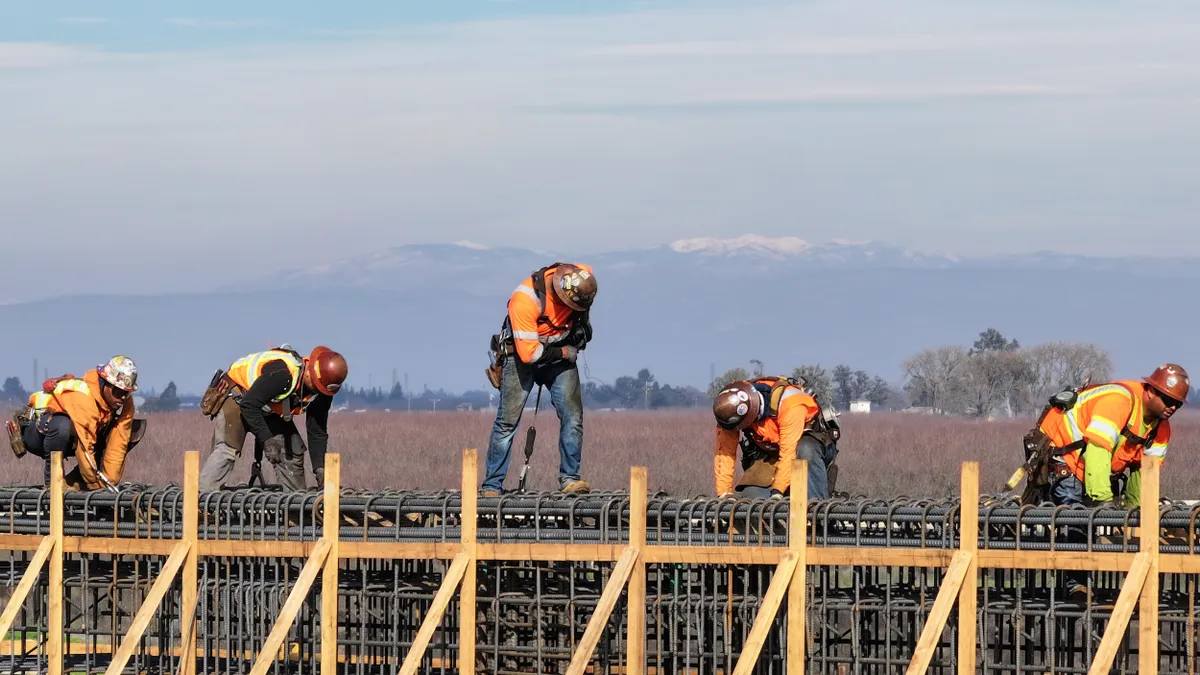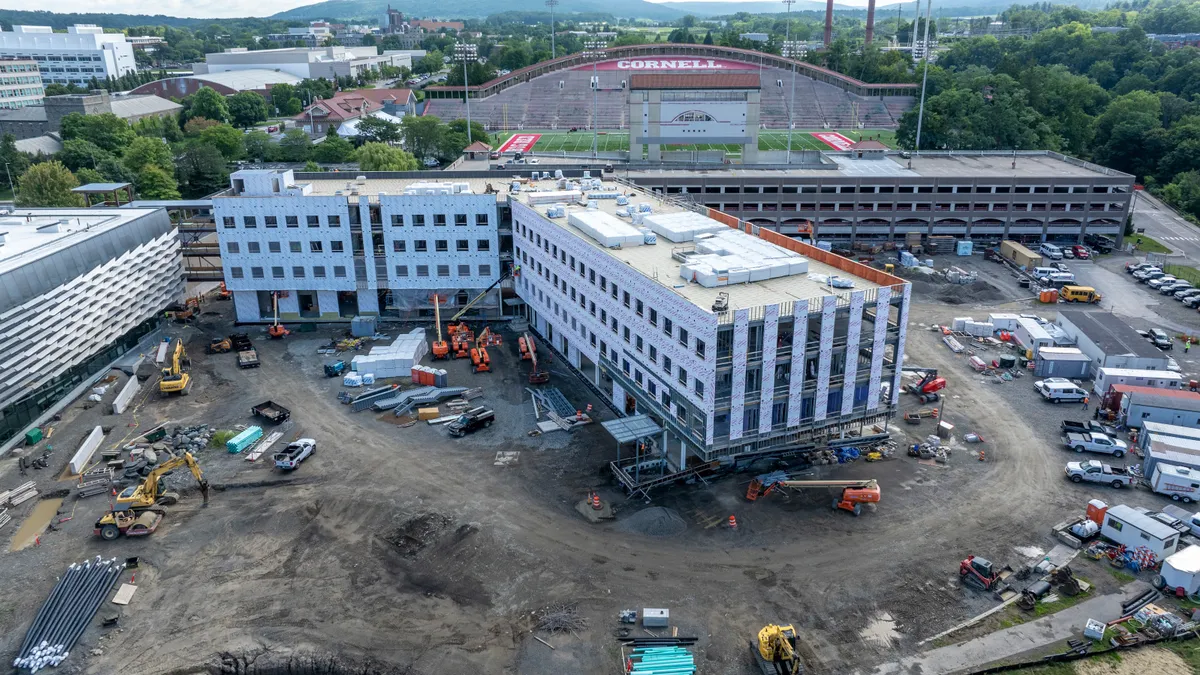A new year, a new President and new promises made about our nation's infrastructure. Unless you've been living under a rock (a valid way to wait out the pandemic), you're probably well aware of President Biden's proposed $2 trillion infrastructure package, dubbed "The American Jobs Plan." While the President's package is robust and ambitious, people in the heavy civil construction industry are understandably cautious about any promises from the White House.
This cautious mindset is reflected in the data. In the most recent volume of The Civil Quarterly, a quarterly report produced by Dodge Data & Analytics on the heavy civil industry, results showed that roughly 40% of civil contractors are expecting a decrease in profit margins and revenue over the next 12 months. Of that 40%, 64% cite "Insufficient Public Revenue to Support New Projects" as the biggest reason. Still, the outlook is not entirely grim, as 65% of civil contractors are confident in the market's ability to provide them with new business over the next year. This statistic represents a seven point uptick from the previous quarterly survey.
So, while there remains a distrust in the government's ability to fund infrastructure over the course of the next few years, there are still plenty of reasons to be optimistic. Conversations about the package are ongoing, but the President's party seems to have enough political capital to get some semblance of this bill through Congress, perhaps through bipartisan efforts. And while we often think of infrastructure as bridges and roads, Biden's package includes billions of dollars earmarked for everything from nationwide broadband to building a better supply chain for the EV market. The scope requires us to rethink the very definition of infrastructure.
To break down what this bill could mean for our industry and its various players, we sat down with three strategic leaders from Infotech®, a leading software provider for DOTs, local public agencies, engineering firm, and contractors. Joined by Meg The Losen, Ron Perkins, and Joseph Rowland, we'll cover the most significant potential impacts of the $2 trillion package.
Bill highlights
You can find a complete summary of The American Jobs Plan on the official White House website. Here are few highlights:

On the industry's reaction to the proposed bill
We mentioned the feeling of cautious optimism at the beginning of this article, and our expert panel shares that sentiment.
Rowland: Obviously, we're excited to see a comprehensive infrastructure bill. Our experience with bidding shows us how far that funding goes into the community, from sellers of the big equipment, to the small subcontractors and suppliers.
The Losen: I imagine that agencies, consultants and contractors are cautiously optimistic. The history of trying to get new and sustained funding bills through Congress has been so problematic in the last 10+ years that I think it's probably still an "I'll believe it when I see it" perspective.
Perkins: I am very encouraged by the commitment level out of DC to drive employment numbers and the overall economy through the infrastructure bill. It's clear that the bill is directed at transportation but it covers much more than just roads and bridges. This bill, like similar ones after the Depression and WWII, will go very far to get the economy boosted while putting people back on the road and making travel safer for everyone. This should just be the start.
On driving tech adoption, improved reporting, and increased transparency
While agencies and communities across the country are eager to get their hands on increased funding, the whiplash from famine (falling revenues during the pandemic) to feast (massive funding package) may be difficult to manage. From staff to reporting tech, agencies will need to adapt to whatever comprehensive reporting requirements are associated with these new funds. In turn, these reporting requirements are expected to drive the adoption of tools that improve report data.
The Losen: DOTs experienced an overnight and unforeseen change in their budget outlook a year ago when lockdowns drastically reduced gas tax revenue projections. And now, a year later, they are contemplating another extreme where they might need to manage a huge influx of funding. These are agencies that are likely looking at a situation of having "to do more with less" where they will need to manage a much larger program with the same level of professional staffing. In addition, there might be new or different reporting requirements associated with the use of these funds. I am excited to see how systems like Infotech's can provide policy makers, regulatory agencies and ultimately taxpayers with the data, reporting, and audit trail to make sure the funds are spent appropriately and with a high level of transparency.
Perkins: The reality of this bill is that it will also drive efficiencies across the firms participating in many of these federally funded projects. The Federal Highway Administration (FHWA) is raising the bar for digital as-built data across their projects so it is likely that many of these funded projects will require better digital deliverables at the end of the project. We can expect this bill to drive tech adoption in the industry, particularly Building Information Modeling (BIM). In the vertical construction market, which was greatly impacted by the banking crisis in 2008, BIM usage grew significantly in part because the General Services Administration (GSA) federal projects were some of the best projects to target. GSA mandated BIM and BIM usage grew exponentially.
On redefining what "infrastructure" really means
To many, the word "infrastructure" conjures up a simple image: bridges and highways. And while that is what most would reference when using the phrase "crumbling infrastructure," the actual definition of infrastructure is ever-shifting and expanding. This bill in particular recontextualizes infrastructure by focusing on the new essentials of the 21st century - like national access to broadband internet.
Rowland: I am one of those people that think of roads and bridges when I think of "infrastructure." I wouldn't say the bill is expanding the definition as much as it's expanding a lot of people's perception or understanding of what infrastructure is. I'm sure there are elements of it that would stretch the definition of infrastructure, but things like broadband, affordable housing, and innovation, are, I would argue, essential infrastructure. That distinction has been really front and center in the discussions of this bill.
The Losen: I think it's really interesting to just have this discussion around expanding the definition of infrastructure. I cannot remember another time when the idea of expanding the definition has been so front and center. So regardless of the outcome on that point, I think it's very worthwhile to consider and debate.
On what the bill means for current tech and software providers
As mentioned above, this bill is expected to drive tech adoption across the industry as agencies and firms employ new solutions for reporting and tracking. Tech and software providers need to ensure their products can fill these needs, either by developing a solution of their own or integrating with other providers of tools for BIM.
As a solutions provider for the infrastructure industry, Infotech had to consider how it would accommodate the evolving definition and what it would mean for its current bidding solution, Bid Express®. These discussions led Infotech to create a version of Bid Express that worked for all types of state/federal procurement.
Rowland: I started at Infotech around the time of the original stimulus bills around 2010. There was so much happening around broadband and innovation, and we really couldn't find a way to serve as a procurement vehicle for those types of projects. We were already working on the new version of Bid Express, but the stimulus package validated a lot of need for a more flexible type of service and a market for it.
The Losen: We wanted to provide expanded and easier access for contractors and potential new contractors to find work and then to provide agency owners with the tools to report back on the bidding activity and demonstrate a high level of competitiveness and transparency when all these funds started flowing. We expected funds to flow into other projects like school construction and parks, and we wanted to be able to serve those areas with a flexible, secure bidding solution.
Perkins: This kind of funding commands transparency across every aspect of the project lifecycle from funding to progress and all points in between. Bid and contract management are also vitally important processes that will almost certainly be 100% performed digitally. Solutions in these areas and during site inspection should also support BIM and Digital Twin programs that could be incorporated into many of these larger projects.
What's next?
As conversations around the bill continue, folks in the industry should remain optimistic. This administration is determined to address these issues aggressively, and the bi-partisan nature of the infrastructure issue should protect it from an outright veto. We'll learn soon if the bill will be modified from its original form and how those numbers will play out in different areas. In the meantime, agencies, firms, and construction technology companies alike should prepare for a hefty influx of funds, rigorous reporting requirements and an evolving conversation around the definition of infrastructure. If you work for an organization that is seeking a reporting, contract administration or bidding/procurement solution, you can reach out to Infotech here.










